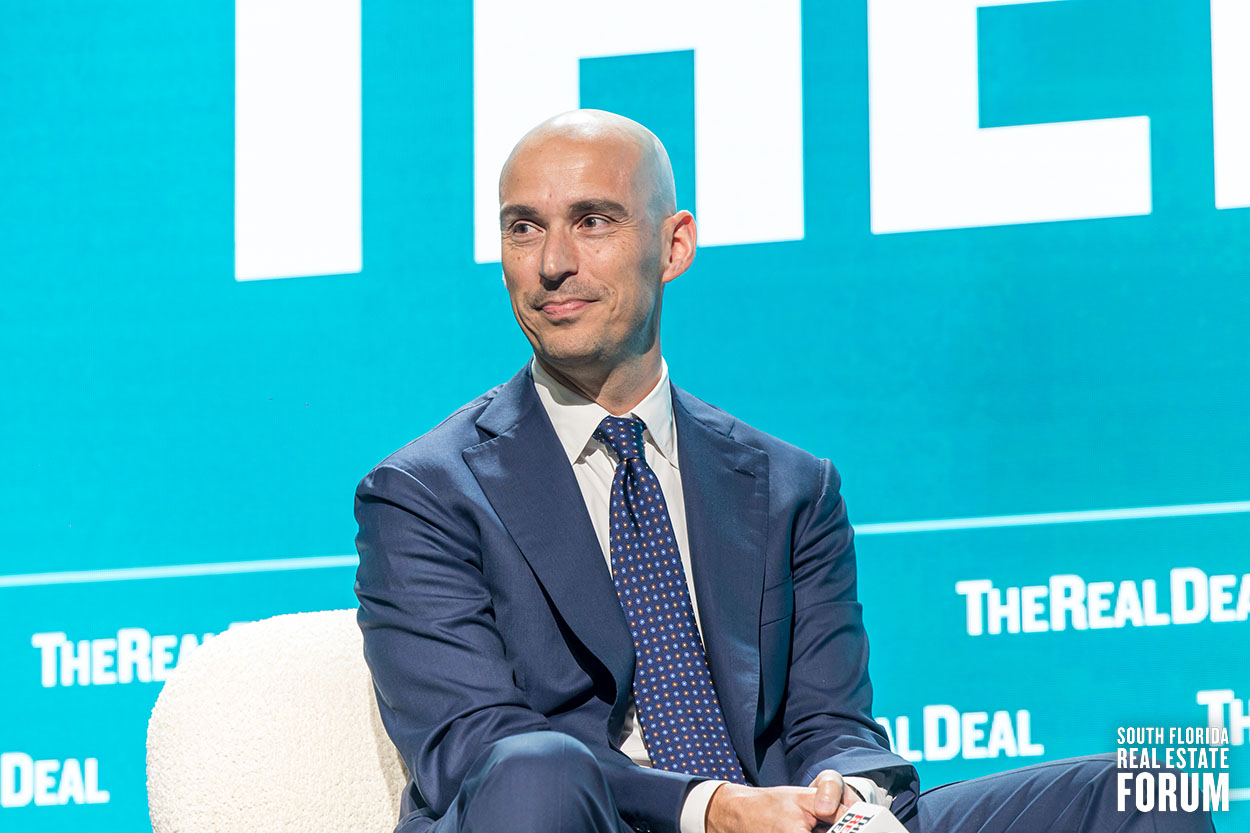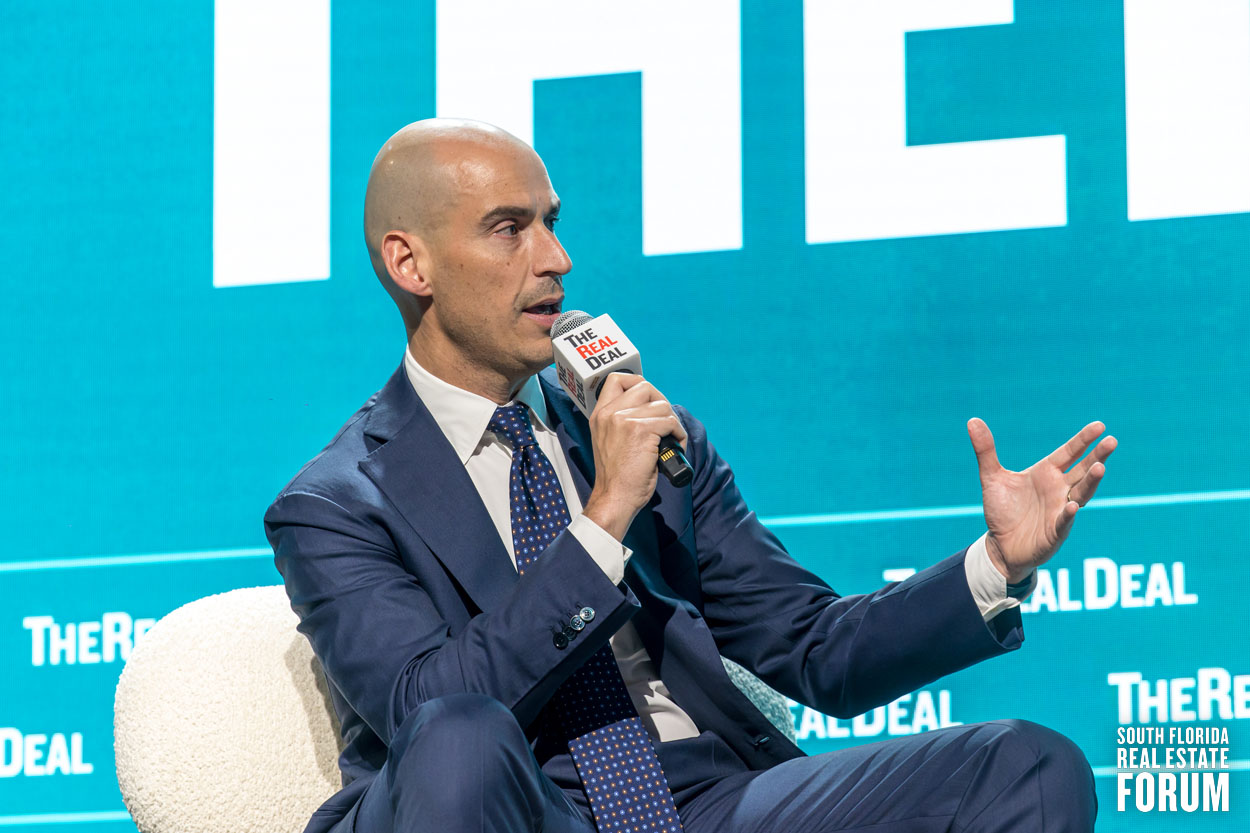South Florida developers have been giddy over the Live Local Act. Under the state law, those who include affordable apartments in their projects can build more than zoning allows, prompting a rush of applications for high-rises.
But bigger projects won’t necessarily turn into a windfall, or even be feasible under the Live Local Act, panelists said at The Real Deal South Florida Real Estate Forum on Thursday.
“Just because you can do 1,000 units an acre … or you can go to 80 stories [near Miami International Airport], doesn’t mean that’s a realistic project,” said land use and zoning attorney Anthony De Yurre. “You can basically build as much as the pro-forma will underwrite.”
Developers Gaetano Caltagirone, co-founder of Coral Gables-based Calta Group, and Asi Cymbal, chairman of Miami-based Cymbal DLT Companies, joined De Yurre, of Bilzin Sumberg, on the panel, “How to Live Local: Unlocking a Gold Mine with Florida’s Newest Development Incentive.” It was moderated by TRD Residential Bureau Chief and Senior Reporter Katherine Kallergis.
The Live Local Act, approved last year, grants developers major tax breaks and allows them to build up to the tallest height within a 1-mile radius of a site, and up to the highest density permitted in a jurisdiction. This year, the legislature also loosened floor area ratio requirements, which now can be 150 percent of the highest FAR allowed in a jurisdiction. In exchange, developers have to designate at least 40 percent of the units for households earning no more than 120 percent of the area median income. The apartments have to stay at below-market rents for 30 years or longer.
“It’s something that makes sense for all of us. That’s what good government should do. Help us out in creating some affordable housing,” Caltagirone said, echoing the sentiment among panelists that the law marked progress in tackling the affordable housing shortage.
Calta is developing the eight-story, 180-unit Revv Hollywood project at 2233 Hollywood Boulevard, with partner Miami-based Gilu Development. Calta also has two other projects in the pipeline in Hollywood, as well as a planned two-phase project in Miami’s Allapattah, Caltagirone said. Calta is considering the Live Local Act for its projects.
While allowing more density makes it financially feasible for developers to include affordable units, there’s a limit to how big developers can build. The panelists agreed that in some cases building high is just too cost-prohibitive and unrealistic, even with Live Local Act incentives.
In Florida, about 20,000 to 25,000 units are underway under the act, De Yurre said, citing a statistic from the Florida Housing Coalition. Most of them are up to 75-feet tall because anything higher requires expenses for sprinklers and other Florida Building Code life safety mandates, De Yurre said. The next feasible height tier is up to 120 feet, but then developers generally would have to push back on high parking requirements.
Parking podiums and standalone garages, which are more common in taller projects, are more expensive than garden-style complexes’ surface parking. Many municipalities have outdated requirements for parking, including in urban areas, that were imposed before the proliferation of ride shares, scooters and public transit, De Yurre said.
The cost to build a parking spot in a garage can be up to $25,000 and reach $35,000 at a high-rise, more than the roughly $10,000 per spot in a surface parking lot, Cymbal said.
At his 341-unit Laguna Gardens complex completed this year in Miami Gardens, Cymbal retroactively applied the Live Local Act. Originally planned as a market-rate apartment project, Laguna Gardens now is entirely a below-market rate complex. This allowed Cymbal to use the law’s tax breaks. He didn’t use any of the law’s height and density incentives at the project, whose construction started before Live Local was approved.
Under Live Local, developers can get a tax exemption of up to 100 percent of the assessed value of units for projects where all apartments are designated for households earning up to 120 percent of the AMI. At projects where some of the units are at below-market rents, the tax exemption is for up to 75 percent of the assessed value of these units.
“We would probably see about a $300 to $350 a month tax break, and conversely we have to lower the rents anywhere between $50 to $150 a month” at Laguna Gardens, Cymbal said. “So you have a net benefit of about $200-plus per door.”
The law mandates that all units at below-market rents must be apartments, and allows the remaining units to be either apartments or condos.
De Yurre said he’s seeing proposals pop up for both condos and condo-hotels for the market-rate units. This structure “is making for some interesting bedfellows” because an affordable housing developer would be working on the same project with a condo or condo-hotel developer, he said.
De Yurre hinted that more affordable housing laws may be coming at next year’s legislative session. The legislature “has an appetite to go back with another housing package. Is it going to be called Live Local? No. Is it going to be two separate bills –– a tax bill and a zoning bill? Yes,” he said.
He will continue to push for less parking mandates, saying Live Local projects should be allowed to have one spot per unit.
Cymbal had a more aggressive suggestion: Eliminate all parking requirements.
“Leave it to the developer to figure out. That will make housing more affordable.… I mean we won’t build zero. That would be suicide,” he said. “But we don’t need to build 1.5 [spots per unit].”







